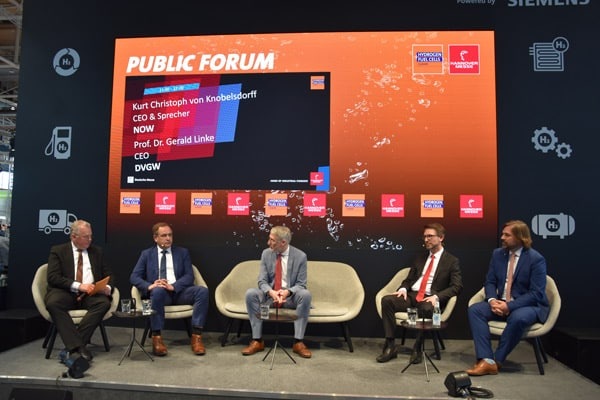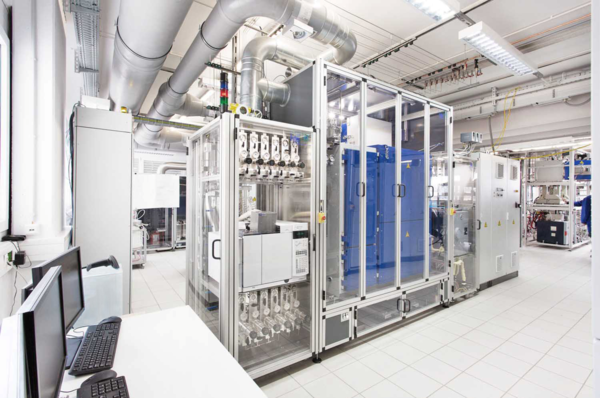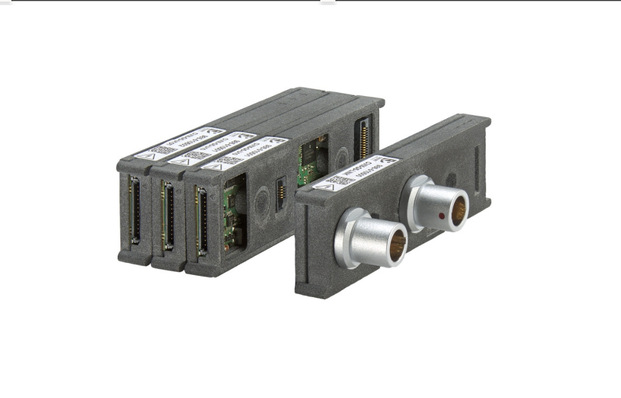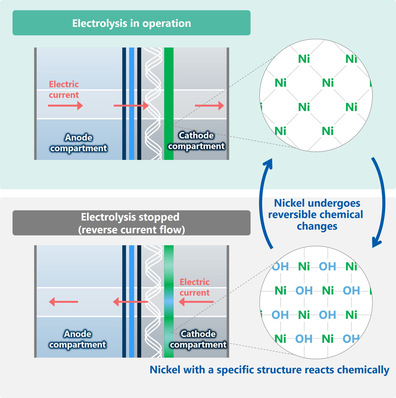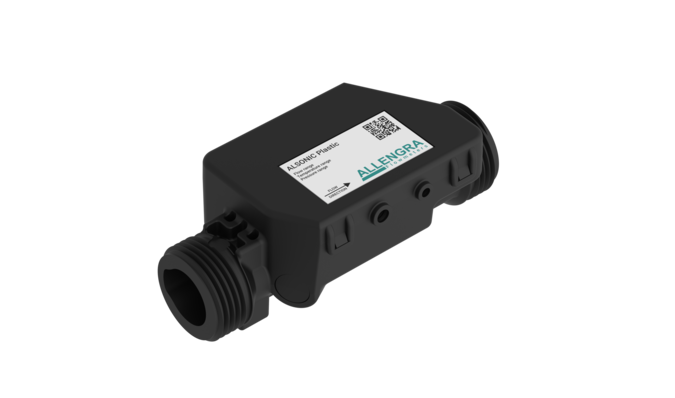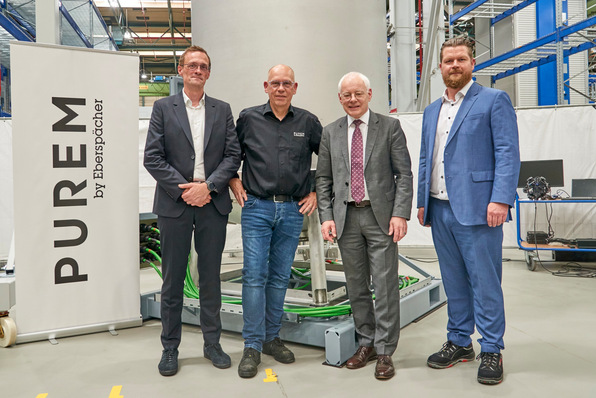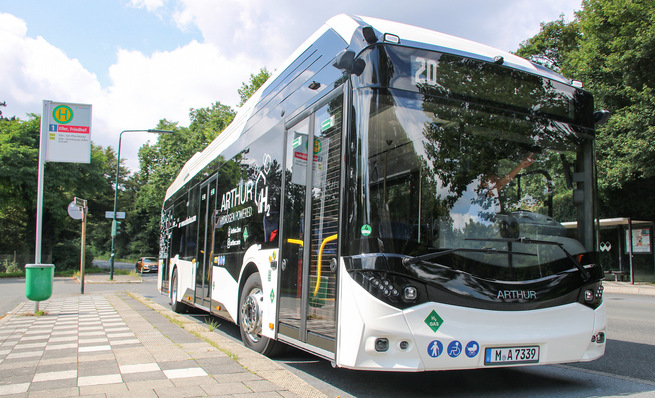Never before was the Hydrogen + Fuel Cells Europe event so big – not even in the best days of Hannover Messe. More than 270 exhibitors presented their products in Energy Hall 13 at the West Entrance, and numerous visitors occupied the stands, aisles and forums. Across the entire exhibition grounds, more than 500 exhibitors were showcasing H2 and FC technologies; however, it was far emptier in the other halls than on the orange carpet of H2+FC Europe organizer Tobias Renz. Hydrogen, according to Deutsche Messe AG, alongside artificial intelligence and energy management, was among “one of the core themes of this year’s Hannover Messe” and thus made a major contribution to the 130,000 coming to the metropolis in Niedersachsen.
The mood was good and the interest was great – among both exhibitors and visitors. The stand sizes of the Hydrogen + Fuel Cells Europe were not nearly as large as the square meterage of the World Hydrogen Summit in Rotterdam or to previous years, when energy suppliers and wind power manufacturers presented giant two-story exhibition structures. But all in all, relatively many until then little-known companies booked a presence at the Tobias Renz fair from April 17 to 21, and occupied comparatively large areas.
Prominent visitors
More than 100 political delegations from more than 50 countries found their way to the throng this year. Besides German chancellor Olaf Scholz, who opened the fair with Indonesian president Joko Widodo, came numerous delegations from all over Europe, Argentina, Mexico, Canada, Japan, China, the USA and India. Particularly EU representatives coming from Brussels were present like never before.
Impressively, many of these high-rank political representatives also appeared on the approximately 10,000 m2 (gross area, 108,000 ft2) of the H2 and FC fair. Notable was, for example, the visit from numerous SPD (Sozialdemokratische Partei) executives. In addition to party leaders Lars Klingbeil and Saskia Esken were German labor minister Hubertus Heil, EU member Katarina Barley, SPD general secretary Kevin Kühnert, Schleswig-Holstein representative Serpil Midyatli and SPD hydrogen officer Andreas Rimkus. Klingbeil asserted to H2-international that hydrogen is a “major theme of an active industrial policy.”
Chancellor Olaf Scholz only went as far as Hall 12, but he let it be known via NOW director Kurt-Christoph von Knobelsdorff: “We will be astonished by how fast the scaling will go when the framework conditions are right.” The statement of the German hydrogen and fuel cell association (DWV) on the matter: “The manufacturers are ready, the technologies are in place, what is missing now are the regulatory framework conditions that guarantee an investment-secure ramp-up – for example in the EEG (German renewables law).”
H2Eco Award goes to TH2ECO
German economy minister Robert Habeck appeared on the second day at the fairgrounds and presented, among other honors, the H2Eco Award, which had been tendered for the second time jointly by the DWV and trade fair company Deutsche Messe AG. At the Public Forum, a discussion area, of Hydrogen + Fuel Cells Europe, Habeck handed the prize worth 5,000 euros to Kilian Fromm of Green Wind Innovation GmbH & Co. KG, in particular for the TH2ECO project (presented in detail starting on page 14).
“As a systemic component for sector coupling, hydrogen cannot be ignored.… Overall, the system is picking up speed again…. Make use of this dynamic. Act together and make something cool out of it.... With electrolyzers, we’re already out in front. The mechanical engineering of Germany can do electrolysis.”
German economy minister Dr. Robert Habeck
Noteworthy statements
In the course of the five days of the fair, a number of statements were made during the numerous talks, presentations and panel discussions that are worth mentioning. For example, Dr. Gerald Linke of the DVGW (German gas and water standards association) stated publicly that, to his knowledge, the gas grids would be H2-ready in the near future, but that there is still a lot to be done on the consumer side. Until now, it was said that only 2 vol.% hydrogen by volume was possible in numerous sections of the gas grid – and 10 vol.% maximally. Limiting factors include users such as industries and natural gas fueling stations but also old steel pipes, was the tone until now. That the gas infrastructure is deemed “H2-capable” is new and therefore still requires some concretization.
A similarly far-reaching remark was made by Kurt-Christoph von Knobelsdorff, who let it be known that an energy import quota of 70 percent does not need to be desperately clung to. Up to now, more than two-thirds of German energy demand has been transported from abroad using fossil fuels. Until now, it was said that in a future hydrogen economy, similar amounts of energy would continue to be imported. If the domestic market develops better than expected, however, this percent requirement could also be lower, expressed the NOW managing director during Hannover Messe.
Directly before, Dr. Tobias Bischof-Niemz had calculated that two-thirds of German primary energy demand could be covered by renewables – half of it by electricity, the other half by hydrogen. Therefore, according to the head of new energy solutions at Enertrag, only about one-third of the total demand would have to be imported in the form of hydrogen, with which Dr. Linke however – as expected – disagreed.
Bischof-Niemz further explained that there will be a "noticeable diversification” and Enertrag will “launch wide area power stations.” Approximately 40 to 60 of these extensive multi-source (distributed generation) systems could be built across all Germany and be connected via a “collection network,” where more energy is produced than consumed, fed into by large solar and wind farms. Operators of these power plants will likely be project developers like Enertrag or GP Joule, but possibly also energy suppliers or electrolyzer manufacturers.
Interesting information also leaked from the EU-level Clean Room talks with the commercial vehicle industry (Clean-Room-Gesprächen). Accordingly, it is expected that by 2030, already 25 percent of new vehicles will be zero-emission vehicles – a quarter of which fuel cell electric vehicles.
A complete success
Appropriately positive ended the concluding remarks of Dr. Jochen Köckler, chairman of Deutsche Messe AG, at the closing press conference: “In the exhibition halls, the industrial transformation was able to be experienced live and in-person.” Thilo Brodtmann, chief executive of the national association of mechanical engineers (VDMA), expressed: “Climate protection and sustainability are now at the top of the agenda for industry all around the world. To achieve the climate neutrality strived for are needed new, intelligent technologies and solutions for resource-conserving and efficient production across all areas of life. Right here at Hannover Messe, we have felt the great interest of customers in the solutions that mechanical engineering has provided for this purpose. That is why the fair was a complete success for our trade this year.”
Author: Sven Geitmann


